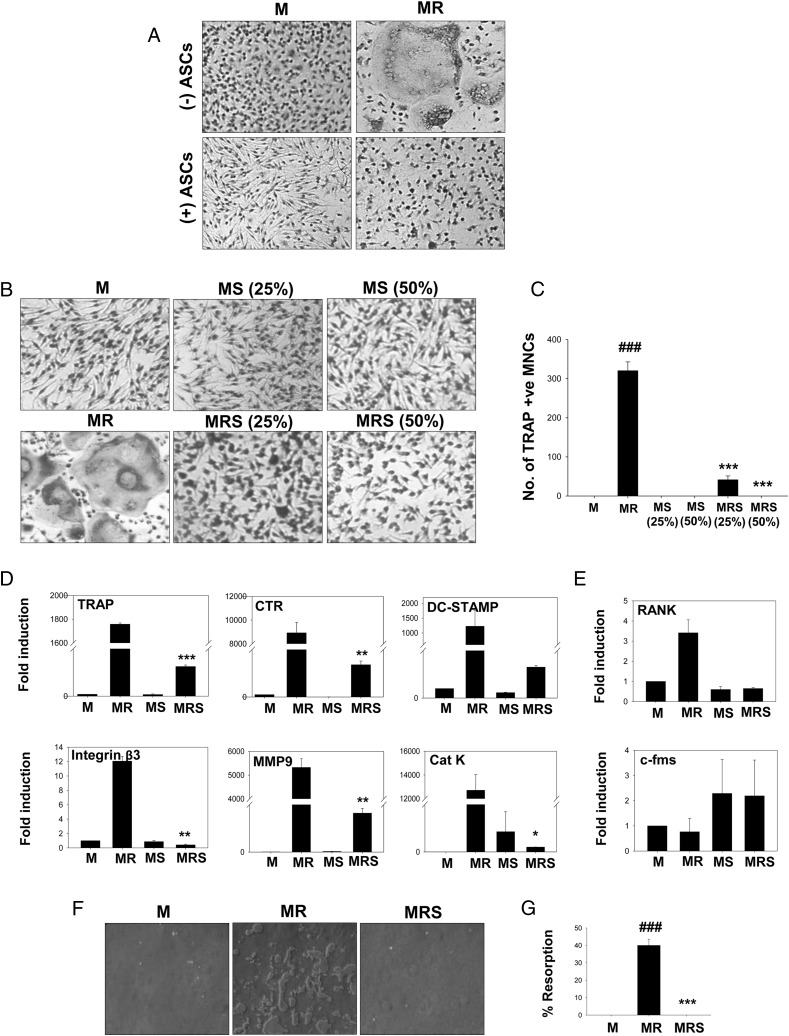FIGURE 3.
ASCs inhibit RANKL-induced osteoclast differentiation in a contact-independent manner. OCPs from mouse bone marrow were cultured in the presence of M-CSF and RANKL with or without ASCs in a contact-independent manner. (A) Representative photographs of TRAP+ MNCs of Transwell cultures of osteoclast differentiation with OCPs in the lower chamber and ASCs in culture inserts. Original magnification ×10. Representative images (original magnification ×10) (B) and number of osteoclasts (C) in cultures where OCPs (5 × 104 cells/well) were differentiated into osteoclasts in 96-well plates in the presence or absence of ASC-CM (S) for 3–4 d are shown. ASC-CM was added at two different concentrations (25% and 50%). Gene expression analysis of markers of osteoclasts (D) and receptors of OCPs (E) is shown. Results are representative of three (A–C) and two (D and E) independent experiments. (F and G) OCPs were differentiated in 96-well plates coated with a calcium phosphate film, with or without 50% ASC-CM (S) for 8 d. Cells were washed off and resorption of the calcium phosphate film by osteoclasts was assessed by bright-field microscopy. Original magnification ×10. Data are shown as representative images (F) and percentage resorption (G) of two independent experiments with eight replicates in each. ###p ≤ 0.001 compared with M-CSF group; *p ≤ 0.05, **p ≤ 0.01, ***p ≤ 0.001 compared with M-CSF and RANKL group. M, M-CSF; MR, M-CSF and RANKL; MRS, M-CSF and RANKL with ASC-CM; MS, M-CSF with ASC-CM.

